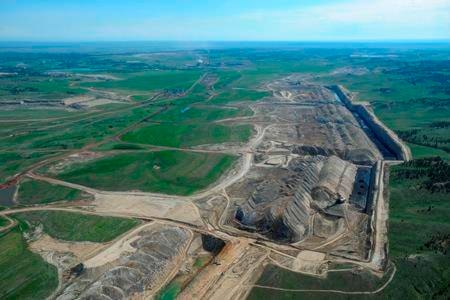HELENA, Mont. — One of the oldest coal companies in the U.S. filed for bankruptcy protection Tuesday to deal with more than $1.4 billion in debt amid declining demand for the fuel.
Englewood, Colorado-based Westmoreland Coal Co. filed for voluntary Chapter 11 protection in U.S. Bankruptcy Court in Houston as part of a restructuring agreement with an unnamed group of lenders.
Westmoreland, which operates mines across the U.S. and Canada, is the fourth major coal company to file for bankruptcy in the past three years, joining Peabody Energy Corp., Arch Coal and Alpha Natural Resources.
Westmoreland officials said in a statement that operations won’t be interrupted and there are no expected staff reductions.
“After months of thoughtful and productive conversations with our creditors, we have developed a plan that allows Westmoreland to operate as usual while positioning Westmoreland for long-term success,” interim CEO Michael Hutchinson said in the statement.
Coal companies have struggled as demand drops due to a glut of cheap natural gas, the rise of renewable energy sources and plans by some states to reduce or eliminate coal from their energy portfolios.
There are no new coal plants being built in the U.S., and two major coal consumers, China and India, have cancelled projects as they seek to reduce air pollution.
Westmoreland officials warned in August that declining industry conditions and significant debt “give rise to substantial doubt about our ability to pay our obligations as they come due,” according to a filing with the U.S. Securities and Exchange Commission.
Westmoreland has $770 million in assets and $1.4 billion in debt, according to the bankruptcy filing. One of its creditors is the U.S. Bureau of Indian Affairs, which Westmoreland owes $1.8 million in royalties, according to the bankruptcy filing.
The restructuring agreement, which must be approved by a judge, includes refinancing an outstanding loan and a “business transformation” meant to significantly increase cash flow, the company statement said, without providing details.
The group of lenders that holds a majority of Westmoreland’s debt also plans to bid for the company’s assets, the statement said. An affiliated company, Westmoreland Resource Partners, is being sold off separately.
Westmoreland was incorporated in 1854 in Pennsylvania. It has coal mines in Montana, Wyoming, New Mexico, Ohio, North Dakota and Texas, and a coal-fired power plant in North Carolina.
Westmoreland also has mines in Canada that are not part of the bankruptcy filing.
In Montana, coal demand involving Westmoreland’s Rosebud mine is expected to drop when two of the four units of the Colstrip power plant cease operations by 2022. The company’s other major Montana mine, the Absaloka mine on the Crow Indian Reservation, has already seen demand drop.
In New Mexico, the company’s San Juan mine also serves a power plant that’s looking to get out of coal use earlier than expected.
